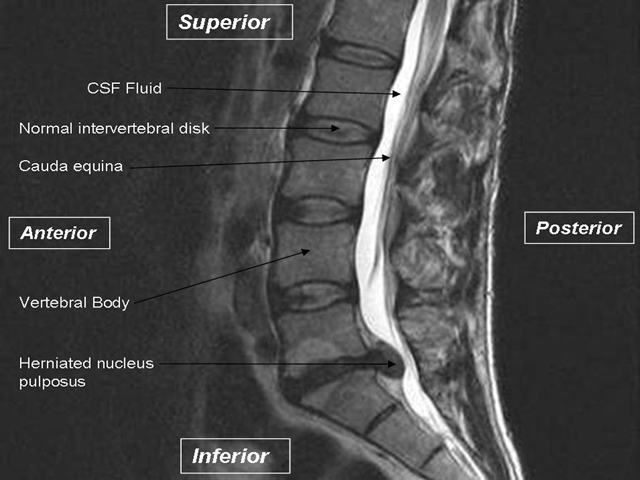Summary
Findings
Sagittal T2-weighted MRI of the lumbar spine shows a large, posterior herniated disk at L5-S1.
Impression
Degenerative Disk Disease (DDD) with disk herniation, lumbar spine
Clinical Pathologic Correlation
Disk herniation is the most common cause of sciatica with a peak incidence of 30-55yo. 95% of clinically significant lumbar disk herniations involve the L5 and S1 nerve roots. Patients with disk herniation classically present with acute onset of back pain after lifting a heavy object, worsened with coughing, sneezing and sitting. With nerve compression, patients may have sciatic pain (shooting pain down one or both legs) along with weakness in the distribution of the affected nerve root. MRI imaging is not predictive of the development or duration of low back pain. In fact, among asymptomatic patients <60yo, nearly 55% were found to have bulging and herniated disks. Thus, diagnosis requires clinical correlation. A high proportion of disk herniations spontaneously resolve over a two-year period. Treatment is primarily supportive, consisting of anti-inflammatories, a short period of rest then physical therapy. In addition, epidural steroid injections have been found to be effective in extended pain relief, especially in patients with lumbar disk herniation and radiculopathy.
View
MRI (magnetic resonance image)
Specimen
Lumbar spine
Image Credit
Douglas Chang, M.D., Ph.D.Department of Orthopedic Surgery
School of Medicine
University of California, San Diego

